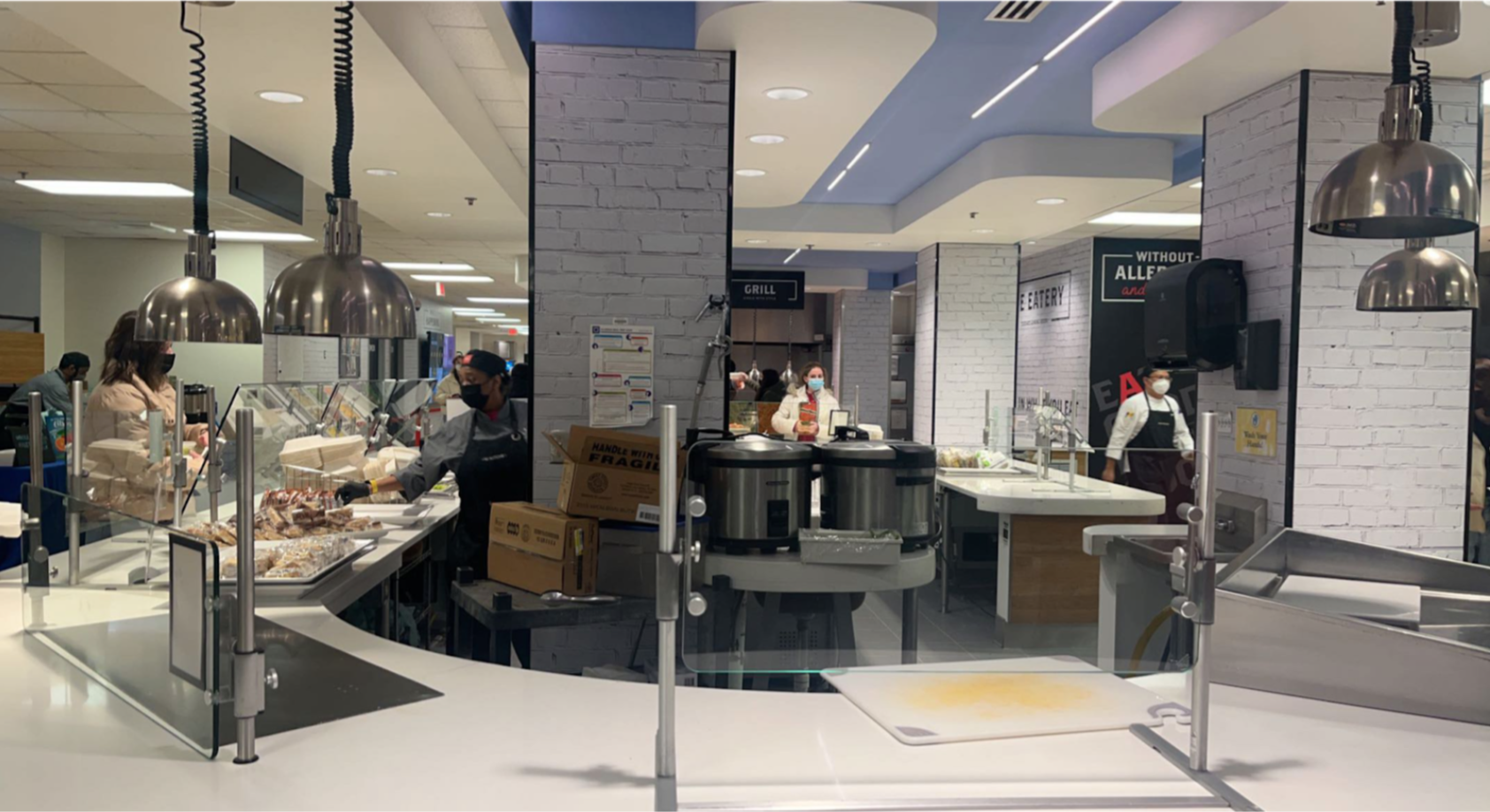American University’s Modified Dining Plan Creates Unhappy Students
The plan, lasting until Jan. 29, reduced dining options around campus including Terrace Dining Room.
By Casey Bacot for COMM-320 at American University
Surrounding the uptick of COVID-19 cases around the nation due to the Omicron variant, American University responded with fully online classes, limited campus events, and modified dining options. Students were unhappy with the university’s choices, specifically AU dining.
Modified dining on campus meant a few things for students: there would be fewer dining locations available, limited options at those locations, and more skepticism surrounding the value of a meal plan this semester.
The Terrace Dining Room has seen quite possibly the biggest changes amongst dining options. In a usual semester, the dining hall is usually filled with students, staff, and plenty of food. Changes made included grab-and-go style meals, a reduced number of food stations to select from, and fewer employees working at a time.
TDR is mostly empty this month with fewer stations open, no seating, and queues set up to streamline the operations.
Second-year student Alex Kauffman shared her experience with AU dining services. Suffering from multiple dietary restrictions, she found it nearly impossible to return to campus in January.
She required some sort of accommodation from the school. Kauffman contacted several directors of AU dining on Jan. 3 to discuss her options. She didn’t hear back until Jan. 26. She claims that the school failed her in terms of providing any sort of accommodation.
With less than 48 hours before she anticipated to move-in, AU gave Kauffman 3 options: switching her meal plan to only include $800 worth of Eagle Bucks, allowing her to move to another residence hall that includes a kitchen or releasing her from her housing and dining contract completely. While none of those options are viable for Kauffman, her plan for the remainder of the semester is to utilize her residence hall’s shared kitchen and nearby grocery stores. She also hopes for the opportunity to be reimbursed for housing for the month of January. She said, “I think honestly any money helps at this point now that I’ll have to go buy kitchen supplies and groceries every week.”
American University’s dining hall, the Terrace Dining Room, has faced plenty of slander from students for their questionable food options. Jonathan Rosen, a self-proclaimed “TDR lover,” said that even he is disappointed with how AU has modified its dining options. Last semester, Rosen ran out of meal swipes in mid-November meaning he averaged about nine meal swipes a week. He said since moving in this semester on Jan. 8, he has only used about six meal swipes total. Rosen said that he hopes they “bring back the old TDR soon.”
Rosen is not alone in his belief that he is not getting his money’s worth this month. In a survey conducted amongst about 20 students, roughly 95% agree with him.
Ann Marie Powell, the Director of Dining and Auxilary Services at AU was contacted for an interview along with several other head dining directors. While she did respond to the initial interview request email, she did not respond to the second email which included questions regarding the dining services. Instead, the Assistant Vice President for Community and Internal Communication, Elizabeth Deal, emailed back a statement outlining that Powell may be unable to fulfill the request. As of writing, no other response from Powell has been received. This does not seem to be the first time that Powell has not responded well to questions raised by students.
According to Deal’s email and several other leaders on campus, AU’s plan for the rest of the semester is to go back to full operations beginning Jan. 31. In terms of staff cuts, Deal said nothing more than, “Chartwell employees are represented by the Union and follow seniority guidelines.”




